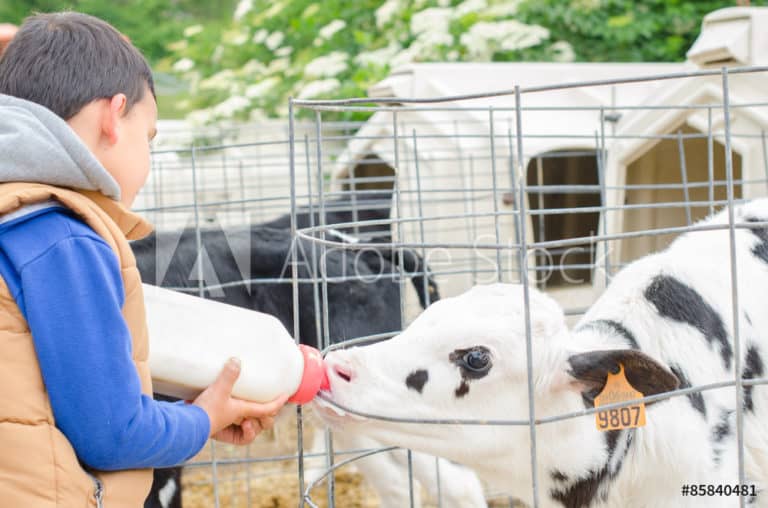This months blog focuses around continued heat and how it effects the unborn calf.
Research continues to show that prenatal stress can affect metabolism of the offspring. This appears to hold true for many different species of animals, including calves. One stress that consistently affects pregnant dairy cows is heat stress. Research has shown that prenatal heat stress on the dam affects calf body weight (calves from heat stressed cows are up to 11 pounds lighter than calves from cooled cows), and immune function.
Calves, in addition to low birth weights will typically have decreased suckling speed, lower immune functions and are not as aggressive of those calves that their dams had a heat abatement program in place. Metabolism will also be affected. The study below explains how heat stress and metabolism work side by side.
Researchers at the University of Florida 2014 housed 20 dry cows in a cooled (CL) or non-cooled, heat stress (HT) environment at drying off. When calves were born, they were immediately separated from their dams and fed 3.8 L of high-quality colostrum by 1 hour after birth and then 1.9 L of colostrum again in about 12 hours. From day 2 to 42, calves were fed pasteurized milk (1.9 to 3.8 L/day) and decreasing amounts to weaning at day 49. Calf starter and water were available for ad lib consumption from 2 days of age.
On day 55, calves were exposed to two different metabolic tests, a glucose tolerance test (GTT) and an insulin challenge (IC). The goal of the GTT is to find out how calves respond when a dose of glucose is infused into the jugular vein. Typically, blood glucose will increase after administering the glucose into the vein, followed by an increase in blood insulin concentration. The body secretes insulin into the circulation to regulate blood glucose; as glucose rises, insulin is secreted, which promotes uptake of the glucose from the circulation into many different body tissues.
In this way, blood glucose can be closely regulated by the animal. In the study by Tao et al., the concentration of both glucose and insulin in calves in both groups increased up to two hours after glucose infusion. Although there was no effect on insulin concentrations, the concentration of plasma glucose was lower in calves from HT cows. This suggests that when glucose was infused, calves from HT cows were more efficient in moving glucose from the circulation into other body tissues, so the pool of circulating glucose remained lower.
So after reading this study, the question I have is, what are the best options to get a calf off to a healthy start during heat stress periods?
My first thoughts always go to:
1) Get the best colostrum into them asap, use a refractometer to measure quality.
2) Followed up by good quality transitional milk for 3-4 feedings, supports added insulin, VTM’s and higher protein/fat.
3) Then followed up by free choice electrolytes in water, increased circulation of blood flow to extremities.
4) Then onto a good nutrition program, factor for immune and growth.
5) If needed add probiotics to support lower gut health to your milk diets which helps with metabolic issues also.
Let Calf Star be your support team.
Minnie

